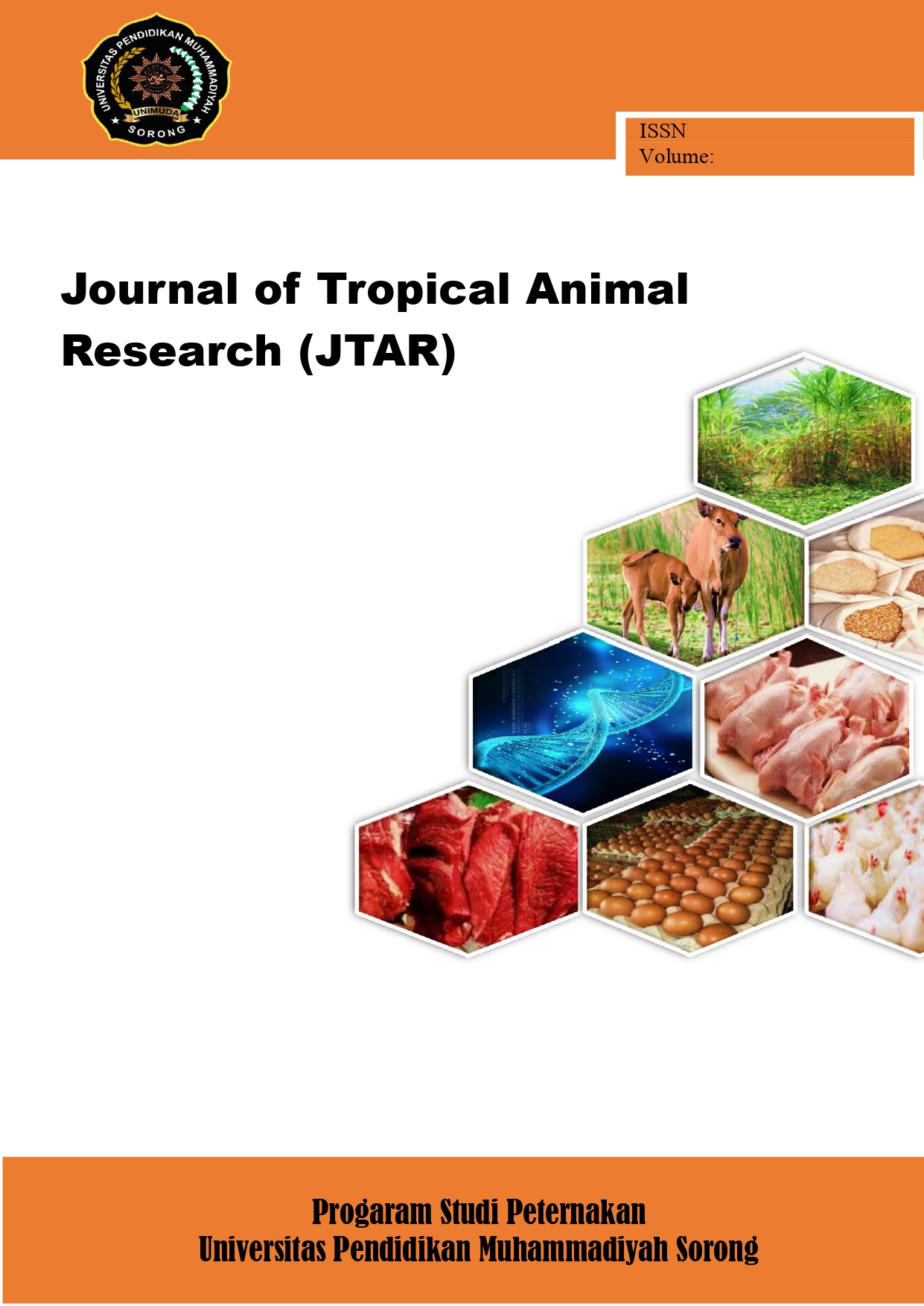Evaluasi Kinerja Program Sapi Induk Wajib Bunting (SIWAB) Di Konawe Selatan, Sulawesi Tenggara, Indonesia
Kata Kunci:
UPSUS SIWAB, birahi, Service per Conception (S/C), Conception Rate (CR), Non Return Rate (NRR)Abstrak
UPSUS SIWAB is an integrated activity to accelerate the increase in cattle and buffalo populations in a sustainable manner. The purpose of this study was to identify the total number of cooperator and acceptor cattle breeders, evaluate the level of participation of stakeholders, the level of implementation of SIWAB activity stages, the success rate of synchronization and the pregnancy rate of acceptor cattle in the Obligatory Pregnancy Cow (SIWAB) program in South Konawe Regency. The research method used purposive sampling with the number of respondents being 44 breeders and 8 officers. Variables consist of cooperator farmers and acceptor cows, level of stakeholder participation, level of implementation of SIWAB activity stages, success rate of synchronization and pregnancy rate of acceptor cows. The data obtained were tabulated and analyzed descriptively using the t test. The results showed that the total cooperator and acceptor cows at different locations were 22 and 17 people with the number of acceptor cows being 174 cows. The implementation of the stages of SIWAB activities has been carried out well in different locations, but the success rate of synchronizing IB with the duration between synchronization and the occurrence of lust is better in the Tinanggea area, namely 2.93 ± 0.27 and S/C 1.6 followed by a NRR of 21 days. 30 days and 60 days, namely 92.50%, 85.00% and 90.00%, and 75% CR.

